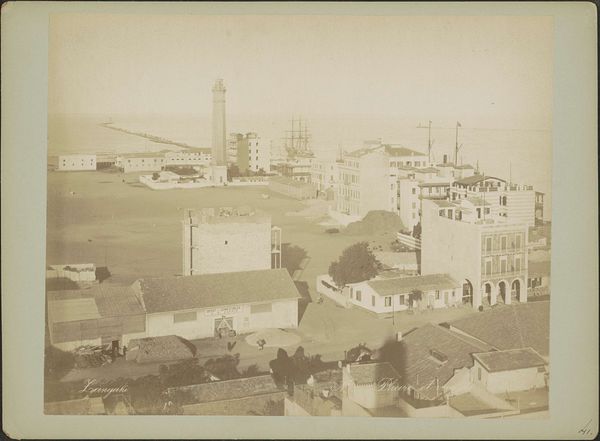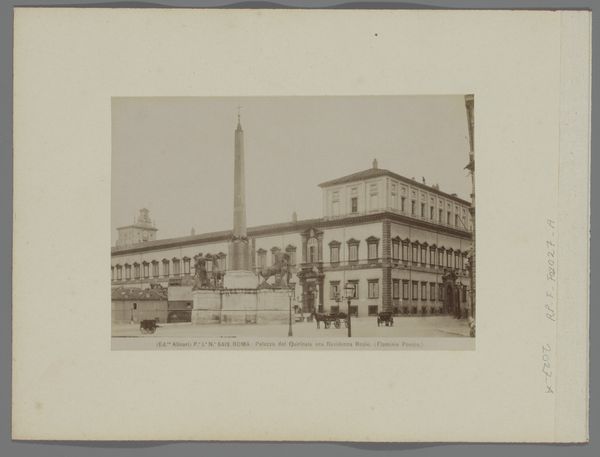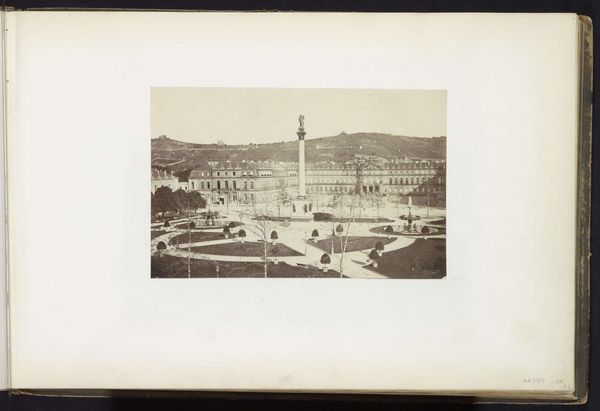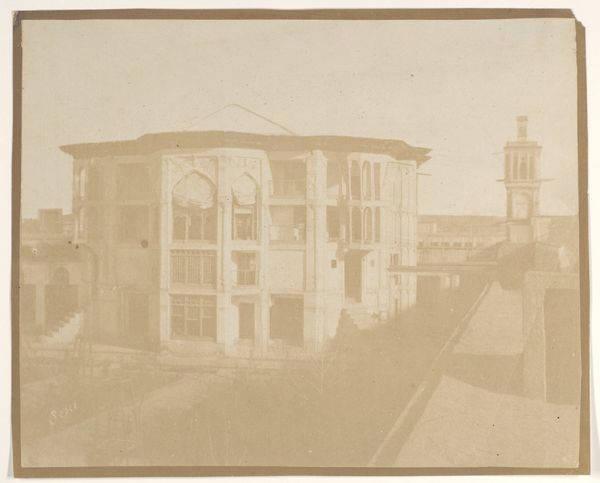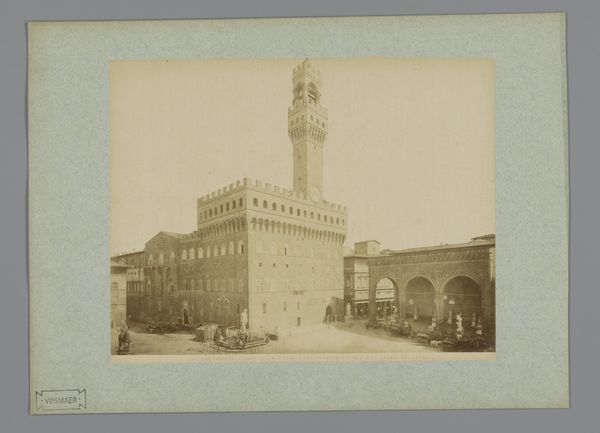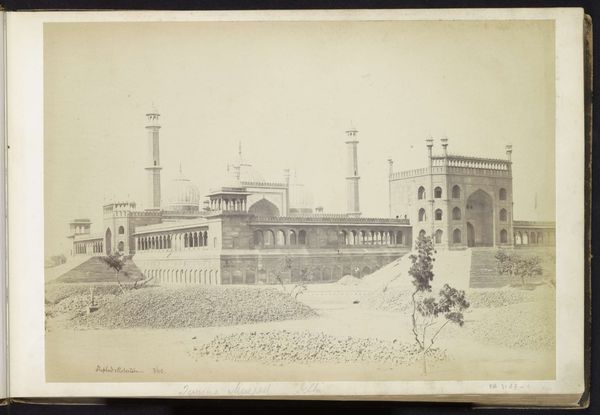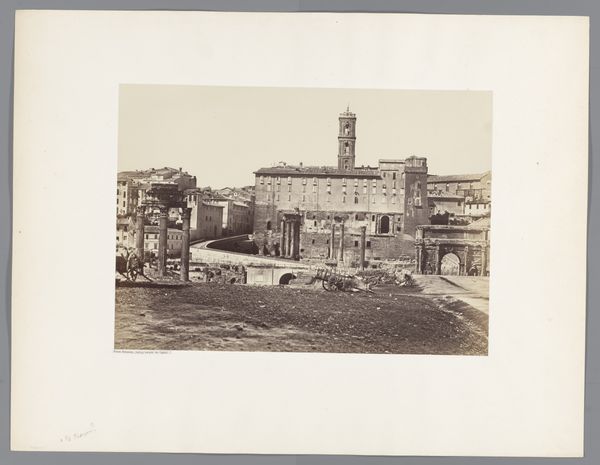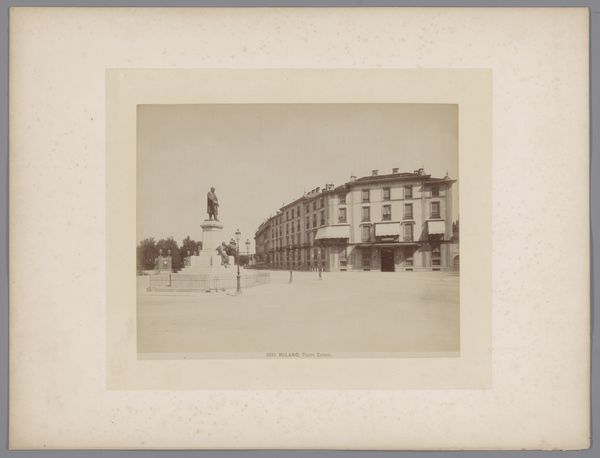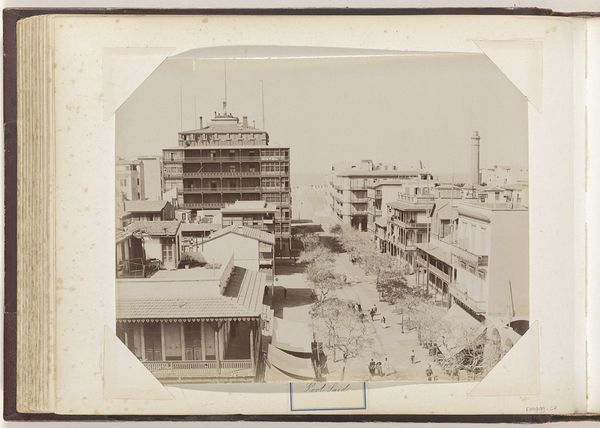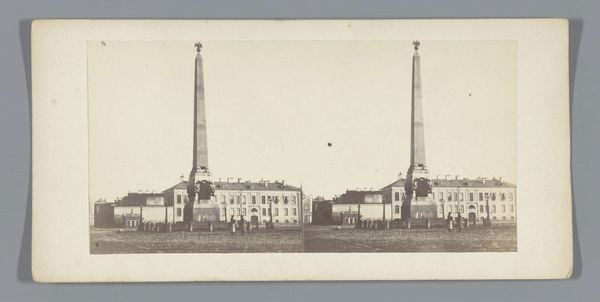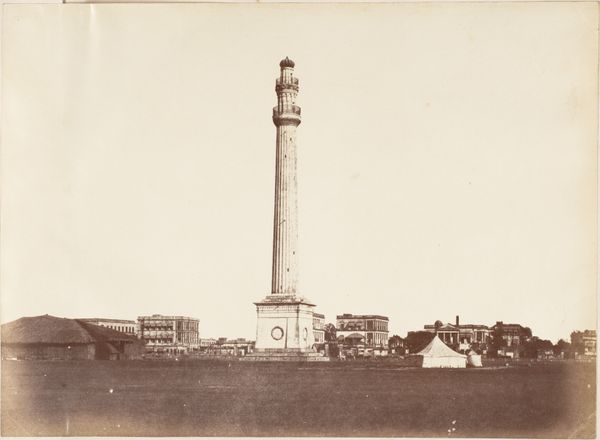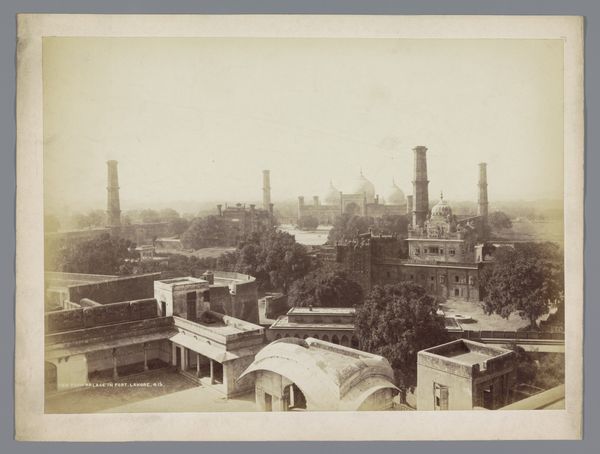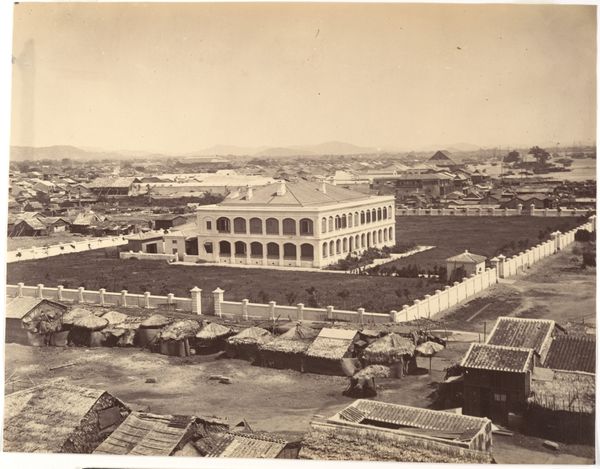
photography, albumen-print
#
photography
#
orientalism
#
cityscape
#
albumen-print
Dimensions: height 231 mm, width 276 mm
Copyright: Rijks Museum: Open Domain
Curator: This albumen print, titled "Stadsgezicht met de vuurtoren van Port Said", a cityscape by C. & G. Zangaki from 1885, offers a glimpse into late 19th-century Egypt and is currently held in the Rijksmuseum's collection. Editor: A melancholic sepia tone immediately establishes the somber mood—a striking cityscape muted under the orientalist lens. Curator: Indeed. Note the layered composition. Zangaki frames the lighthouse using the surrounding buildings, creating a network of geometrical structures. How do you see it operating formally? Editor: The albumen's subtle texture complicates the industrial cityscape's narrative. We can see laborers, potentially involved in manufacturing the building materials, which hints at a socioeconomic dynamic subtly embedded within the aesthetic framing. Curator: Fascinating. How so? Semiotically, we can interpret the lighthouse as a phallic symbol. Its smooth, soaring structure stands as a stark contrast to the flat, rectilinear arrangement of buildings below. The photograph subtly introduces binary ideas and challenges ideas about form. Editor: What about the labor inherent in the creation of an albumen print of this scale at this moment? The manual process of sensitizing, exposing, and developing speaks to a pre-digital engagement with materiality and manufacture. It underscores the human input to capture a landscape forever impacted by modernity and industry. Curator: Well-reasoned. There is indeed an element of the personal in the photographic tradition, in this context acting almost against its status as a tool of reportage. I read this work as being concerned with the aesthetics, in tension with the commercial intentions. The very stillness and subdued light, that's something that must come from the conscious intentions of the artist. Editor: It's these inherent complexities—the photographic materiality speaking alongside the image and composition—that allow for deeper explorations of labour, purpose, and colonial visions within Orientalism. The lighthouse looms, but its very representation bears the trace of human input and effort at every stage. Curator: That's given me a whole new lens through which to view Zangaki's work. Editor: Agreed, and considering material conditions alongside formal composition reframes these cityscapes from picturesque vignettes into historical testaments of labor.
Comments
No comments
Be the first to comment and join the conversation on the ultimate creative platform.
